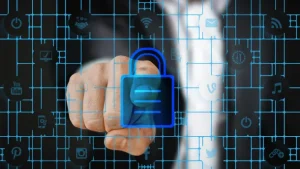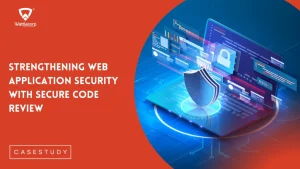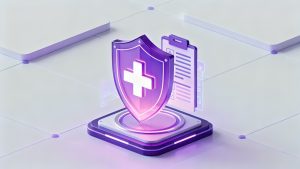
Education has entered a new digital dimension — where smart devices, virtual classrooms, and online platforms have become an integral part of learning. While this transformation has enhanced access, collaboration, and creativity, it has also expanded the exposure of personal and institutional data.
From students’ personal details and academic performance to faculty records and parent contact information, every piece of data handled by an educational institution represents both sensitivity and responsibility.
The Expanding Data Landscape and the Rising Challenges in Education
Today, almost every educational activity involves the exchange of digital information bringing convenience, innovation, and new risks:
- Smart classrooms and interactive tools such as whiteboards, tablets, and smart screens capture and store student interactions, attendance, and even learning behavior.
- For minor students, the use of parental data (mobile numbers, email IDs, emergency contacts) is common for communication and system access, making family information part of the data ecosystem.
- Faculty data – Including contact details, schedules, and performance information are frequently shared to coordinate with parents or guardians.
- Institutional Support Services – Transportation, cultural programs, welfare initiatives, online surveys, and virtual classes also rely on the collection and processing of student, parent, and faculty data.
- Third-party service providers – (e.g., cloud storage, LMS vendors, app developers etc.) that handle institutional data but may lack robust privacy controls.
- Privacy & Consent Management Challenges – Lack of clear consent mechanisms for data collection from students and parents, especially minors. Unclear ownership of academic content created by faculty or students on shared platforms.
- Technical vulnerabilities such as legacy systems, weak authentication, and insecure Wi-Fi networks increase the risk of data exposure.
- Managing Large Volumes of Student, Parent, and Faculty Records – Educational institutions handle vast amounts of personal, academic, and operational data from students, parents, and faculty. With digital learning, smart classrooms, and automated systems, data volumes are growing rapidly, making it challenging to ensure accuracy, security, and compliance, particularly when information is spread across multiple platforms and departments.
This interconnected web of information enables seamless education, but it also increases the risk of unauthorized access, data leaks, and privacy violations if not managed responsibly. The challenge lies not only in securing systems but also in governing behavior, ensuring consent, and fostering awareness across all levels, from students to staff to parents.
There are several studies and experts’ insights regarding the same topic. Please find below some links for some of them.
Any student data breach can have severe repercussions on students. Identity theft can occur, causing financial and personal harm to students. Also exposing the personal data of students can lead to student harassment or cyberbullying
What if your child’s every click, search, and swipe at school was being tracked – not just by teachers but by companies halfway across the world? This isn’t just a hypothetical. It’s happening in classrooms today, and it’s why setting and meeting the highest standards of student privacy and security has never been more critical.
IIT-Roorkee Data breach – “Since the information on the website can be retrieved only through an enrolment number, it means the data has either been leaked or stolen from the academic affairs section. This is clearly a case of cyber security and personal privacy breach,” said a professor on condition of anonymity.
Key Learnings and Challenges
1. Legal and Ethical Responsibility in Data Processing
Educational institutions are accountable for how they collect, process, and protect student, parent, and faculty data. Many still lack comprehensive privacy policies, defined responsibilities, and security frameworks, leaving them vulnerable to legal and reputational risks.
Recommended Actions:
- Establish a Data Privacy Policy defining roles and compliance measures.
- Implement an appropriate Information protections Framework (e.g.: ISO 27001, PDPL) with clear access and security controls.
- Appoint a Data Protection Officer (DPO) or ISMS officer for oversight.
2. Informed Consent and Transparency
Students and parents, particularly minors or those with limited digital literacy, often do not fully understand how their data is used. Lack of clarity or standardized consent processes leads to non-compliance and ethical risks.
Recommended Actions:
- Use simple, age-appropriate, multilingual consent forms.
- Train staff on ethical and transparent consent practices.
- Standardize data collection, storage, and consent renewal across various institutional programs/initiatives.
3. Smart Classrooms and Digital Data Exposure
Smart classrooms, online learning platforms, and digital assessments collect extensive behavioral and performance data. Without proper governance, this information may be retained or shared without adequate safeguards.
Recommended Actions:
- Limit data collection to educational relevance and define retention timelines.
- Secure all smart devices and learning platforms with strong authentication.
- Regularly purge outdated or redundant data.
4. Parental, Faculty, and Family Data Protection
For minors, parent or guardian contact information is widely used for communication and access. Similarly, faculty data such as schedules, evaluations, and personal contact details are often shared across systems, which increases exposure risks.
Recommended Actions:
- Restrict data access to authorized personnel only.
- Use secure, encrypted communication platforms.
- Include confidentiality clauses and clear data-handling standards in policies.
5. Third-Party and Cloud Service Risks
Vendors providing Learning Management Systems, cloud storage, or educational apps handle large amounts of institutional data. Weak vendor controls or vague contracts can result in unauthorized access or breaches.
Recommended Actions:
- Develop a Third-Party Data Management Policy and conduct regular audits.
- Include data protection clauses in vendor agreements (storage, retention, breach reporting).
- Review vendor access logs and compliance documentation
6. Technical Vulnerabilities and Legacy Systems
Outdated infrastructure, weak passwords, and unsecured Wi-Fi networks create entry points for data compromise. Budget and awareness limitations often delay necessary upgrades.
Recommended Actions:
- Upgrade legacy systems and enforce multi-factor authentication (MFA).
- Secure networks through firewalls, encryption, and segmentation.
- Perform routine patching and vulnerability assessments.
7. Data Governance and Large-Scale Record Management
Institutions handle massive volumes of student, parent, and faculty records across multiple systems, making it difficult to ensure accuracy, consistency, and compliance.
Recommended Actions:
- Implement centralized data management systems and lifecycle policies.
- Use automation and analytics tools to manage large datasets securely.
- Conduct regular data cleansing and capacity reviews.
8. Continuous Monitoring, Awareness, and Improvement
Data protection is an ongoing commitment that depends on awareness, accountability, and adaptability to emerging risks.
Recommended Actions:
- Schedule annual compliance audits and risk assessments.
- Provide regular training for students, faculty, and administrative staff.
- Track regulatory and technological updates to strengthen data privacy maturity.
9. Incident Management and Learning from Incidents
Despite preventive measures, data incidents can still occur due to human error, system flaws, or cyber-attacks. How institutions respond and learn from these events, defines their maturity and resilience.
Recommended Actions:
- Establish a formal Incident Management Policy with defined roles and response procedures.
- Conduct root cause analysis and post-incident reviews to capture lessons and improve controls.
- Share key learnings and awareness across staff to strengthen overall preparedness.
Final Reflection – Towards a Culture of Trust and Responsibility
Data confidentiality is not just about compliance or IT controls — it’s about protecting the people behind the data. Every record represents a student’s journey, a teacher’s career, or a parent’s trust. A single data breach can compromise personal safety, cause emotional distress, or damage the institution’s credibility. Therefore, ensuring confidentiality is both a moral and operational priority. Education thrives on collaboration, communication, and connection. As digital interaction deepens, it is important for the institutions to increase their commitment to protecting personal information.
That’s why educational institutions must focus on:
- Secure data practices and continuous improvement
• Regular privacy audits and governance reviews
• Awareness and training for students, faculty, and staff
• Strong vendor and third-party data management aligned with recognized standards
In this connected learning era, data confidentiality isn’t a technical feature — it’s an ethical foundation that supports every student’s right to learn securely and every educator’s right to teach confidently.






